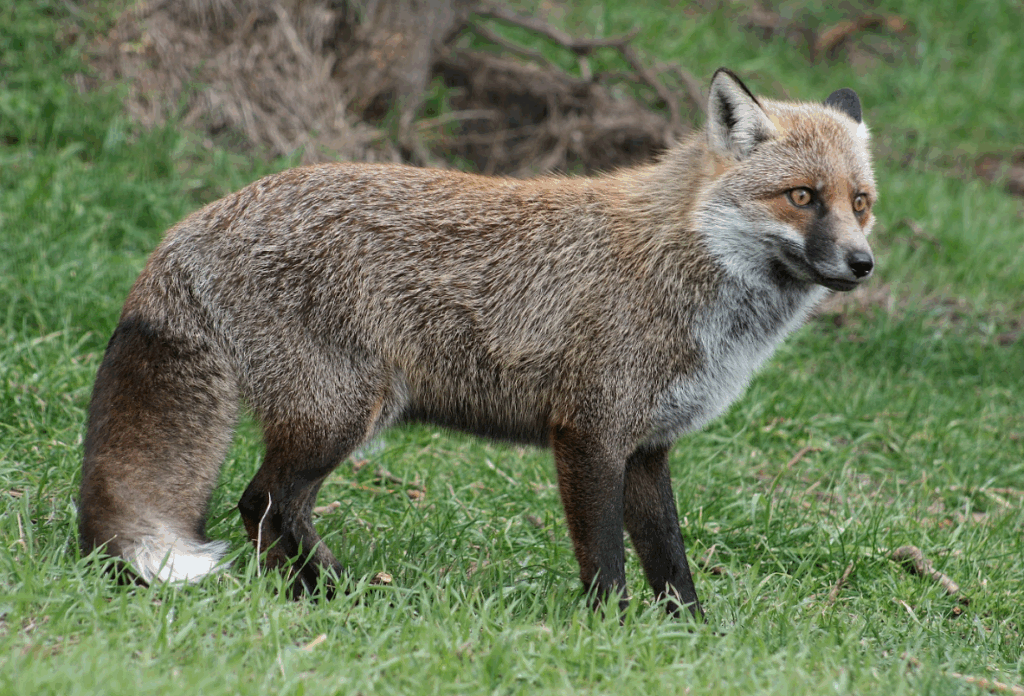Etna, the highest active volcano in Europe, is not only an impressive geological spectacle, but also a veritable sanctuary of biodiversity. Its slopes are home to an astonishing variety of animal species that have learned to coexist with a constantly changing environment, made up of lava flows, beech forests, pine forests and desert plateaus. In this dynamic ecosystem, Etna’s fauna is an extraordinary example of adaptation and resilience.
Resilient mammals in volcanic environments
Among the first silent inhabitants of the volcano are mammals, some of which are easily spotted during quieter excursions. The red fox (Vulpes vulpes) is perhaps the animal symbol of Etna: shy but widespread, it roams the chestnut and oak woods, reaching altitudes of up to 2,000 metres. Agile and cunning, it feeds on rodents, eggs, small reptiles and fruit, and is able to adapt to both dense woods and more open areas.
Another elusive but present inhabitant is the wildcat (Felis silvestris), a nocturnal and solitary animal that prefers more secluded areas. It is not uncommon to encounter the weasel (Mustela nivalis), an agile rodent hunter, or the porcupine, easily recognisable by its unmistakable rustling quills. In addition to these, there are hedgehogs (Erinaceus europaeus), shrews and, of course, hares (Lepus corsicanus) and wild rabbits (Oryctolagus cuniculus), both of which are common in open fields and scrubland up to 1800 metres.
Although often difficult to spot, these animals play a fundamental role in the ecological balance of the volcano, helping to control insects and disperse seeds.
Birds and birds of prey: the rulers of the skies above Etna
Above the treetops and along the rocky cliffs, the skies above Etna are patrolled by a large number of birds of prey, a sign of the health of the ecosystem. Among the most majestic is the golden eagle (Aquila chrysaetos), which has returned to nest on the most remote rocky walls. With a wingspan of over two metres, this queen of the skies hunts rodents, hares and even foxes, maintaining a fundamental natural balance.
Alongside it, buzzards (Buteo buteo), kestrels (Falco tinnunculus), sparrowhawks (Accipiter nisus) and the feared peregrine falcon (Falco peregrinus), one of the fastest birds in flight, regularly fly overhead. These birds of prey find an abundant supply of prey and a relatively undisturbed environment on the volcano.
But Etna is also home to more discreet but no less fascinating birds. Among the endemic species, the Sicilian rock partridge (Alectoris graeca whitakeri) stands out, living among rocks and bushes at altitudes between 800 and 2,000 metres. It is a shy bird with camouflaged plumage, but easily heard in the spring months.
The denser woods, on the other hand, are home to a multitude of songbirds and woodpeckers: chaffinches (Fringilla coelebs), robins (Erithacus rubecula), great spotted woodpeckers (Dendrocopos major), Sicilian long-tailed tits (Aegithalos caudatus siculus) and Sicilian crested tits (Lophophanes cristatus), small and lively, endemic to the island. Summer mornings on Etna are often accompanied by their song.
Reptiles and insects: silent balance and biodiversity
Even the lava fields, which are more arid and sunny, are far from lifeless. Here, reptiles find a perfect habitat for thermoregulation. The best known, and sometimes feared, is the Etna viper (Vipera aspis), a poisonous but generally peaceful reptile that prefers to hide rather than confront humans. Sightings are not very frequent, but it is important to respect its habitat.
Lizards, geckos, the leopard snake (Zamenis situla) and the grass snake (Natrix natrix) also hide among the stones and dry stone walls. All are harmless to humans and essential for keeping insect populations under control.
Insects are an invisible but vital component of Etna’s fauna. Among the most fascinating species are butterflies, such as the Etna aurora, a rare and beautiful butterfly with white and orange reflections, which can be seen in the warmer months. Other common butterflies are the Vanessa atalanta, the Aglais urticae and the Lysandra icarius, which colour the paths and clearings during spring.
Conclusion
The fauna of Mount Etna is a living mosaic, constantly changing, just like the volcano that hosts it. Every species, from predators to the smallest pollinating insects, contributes to maintaining the balance of this unique ecosystem.
Walking along the trails of Etna does not just mean observing lunar landscapes or smoking craters: it means coming into contact with a silent but rich natural environment that deserves respect, attention and protection.
With Etnaway, you can enjoy a guided excursion to discover this extraordinary fauna, accompanied by environmental hiking guides who will help you recognise tracks, sounds and signs of animal presence. Each excursion is an opportunity to learn, explore and marvel.

